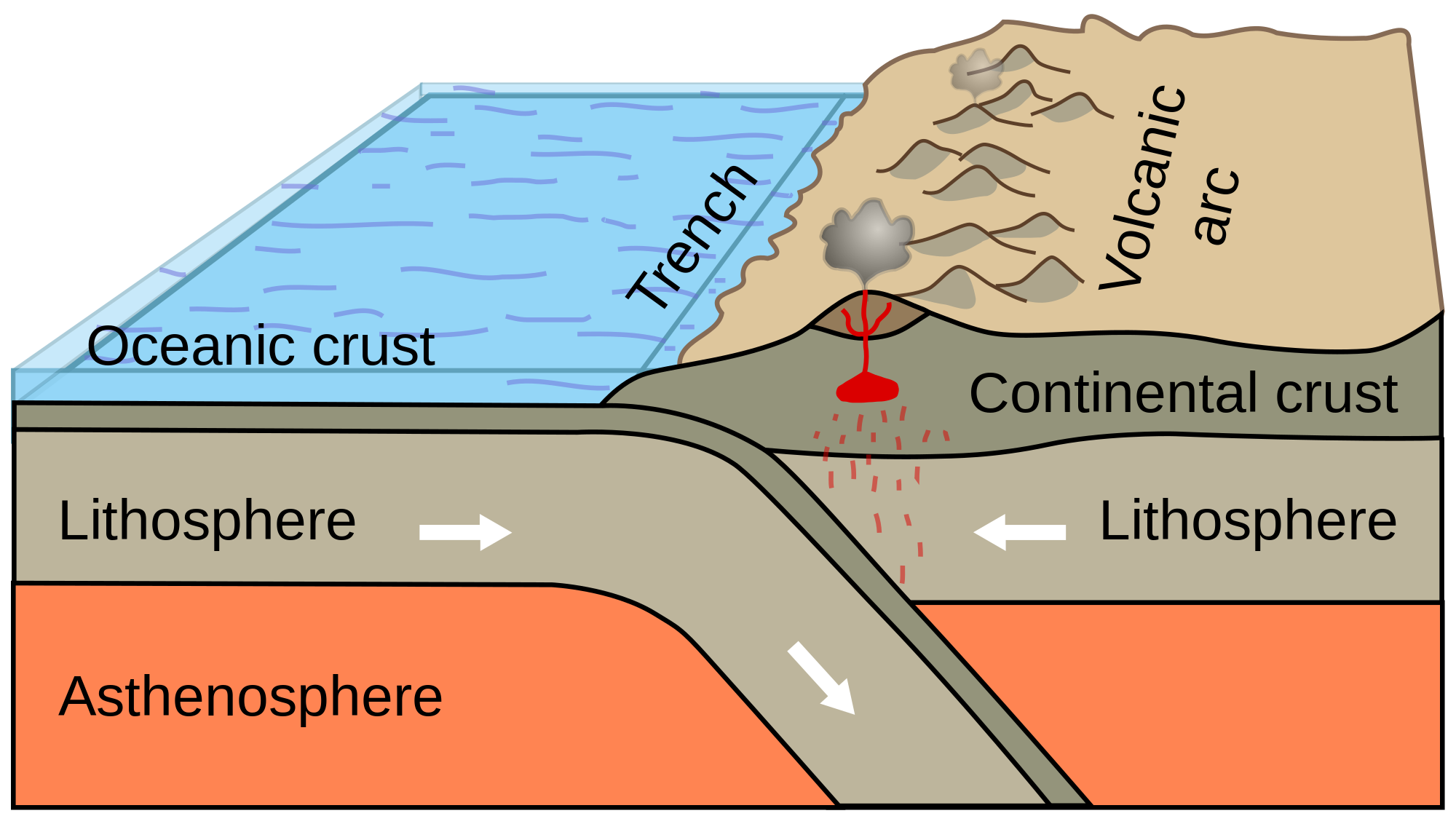27:88 وَتَرَى الْجِبَالَ تَحْسَبُهَا جَامِدَةً وَهِيَ تَمُرُّ مَرَّ السَّحَابِ ۚ صُنْعَ اللَّهِ الَّذِي أَتْقَنَ كُلَّ شَيْءٍ ۚ إِنَّهُ خَبِيرٌ بِمَا تَفْعَلُونَ
You see the mountains and think them as unmoving, but they move like the movement of clouds. The artistry of Allah, who perfected everything, for He is aware of what you do.
Inside the Earth
The Earth’s interior is composed of several layers. The deepest layer is a solid iron ball, about 1,500 miles (2,400 kilometers) in diameter. Although this inner core is white hot, the pressure is so high the iron cannot melt.
Above the inner core is the outer core, a shell of liquid iron. This layer is cooler but still very hot, perhaps 4,000 to 5,000 degrees Celsius. It too is composed mostly of iron, plus substantial amounts of sulfur and nickel. It creates the Earth’s magnetic field and is about 1,400 miles (2,300 kilometers) thick.
River of Rock
The next layer is the mantle. Many people think of this as lava, but it’s actually rock. The rock is so hot, however, that it flows under pressure, like road tar. This creates very slow-moving currents as hot rock rises from the depths and cooler rock descends.
The mantle is about 1,800 miles (2,900 kilometers) thick and appears to be divided into two layers: the upper mantle and the lower mantle. The boundary between the two lies about 465 miles (750 kilometers) beneath the Earth’s surface.
The crust is the outermost layer of the Earth. It is the familiar landscape on which we live: rocks, soil, and seabed. It ranges from about five miles (eight kilometers) thick beneath the oceans to an average of 25 miles (40 kilometers) thick beneath the continents.
Currents within the mantle have broken the crust into blocks, called plates, which slowly move around, colliding to build mountains or rifting apart to form new seafloor.
Continents are composed of relatively light blocks that float high on the mantle, like gigantic, slow-moving icebergs. Seafloor is made of a denser rock called basalt, which presses deeper into the mantle, producing basins that can fill with water.
21:31 وَجَعَلْنَا فِي الْأَرْضِ رَوَاسِيَ أَن تَمِيدَ بِهِمْ وَجَعَلْنَا فِيهَا فِجَاجًا سُبُلًا لَّعَلَّهُمْ يَهْتَدُونَ
And We have set on the earth firmaments, so that it should sway with them, and We have made therein broad highways so that they may receive guidance.
The above Ayat is usually translated with an extra negation added while it may be a possibility that the Ayat is referring to the tilt of the Earth. We know that Earth is tilted on its axis and this tilt gives the seasons on Earth.
Without the extra negation added, the above Ayat states that Allah has put firmaments or pegs so that the Earth should sway with them. Could be some thing for further research to find out if the mountains have a role in keeping the tilt of Earth on its axis, something similar to shim pieces.
Notes:
Some relevant information and their links are given below:
Earth’s tectonic plates are in constant motion. Their movement is driven by heat within the Earth. The deep Earth is very hot, while its surface is quite cool. This causes hot material within the Earth to rise, until it reaches the surface where it moves sideways, cools, then sinks. This circular motion is called convection. Convection within the mantle drives the motion of the overlying plates.


السلام عليكم،
Brothers, regarding the Aya of the Movement of Mountains, your explanation is not correct, floating is not moving like clouds!
It is better to delete this post
LikeLike
Could you please explain in some detail what’s your idea about it. I am not sure I quite get your point. What should be the explanation in your opinion,?
LikeLike